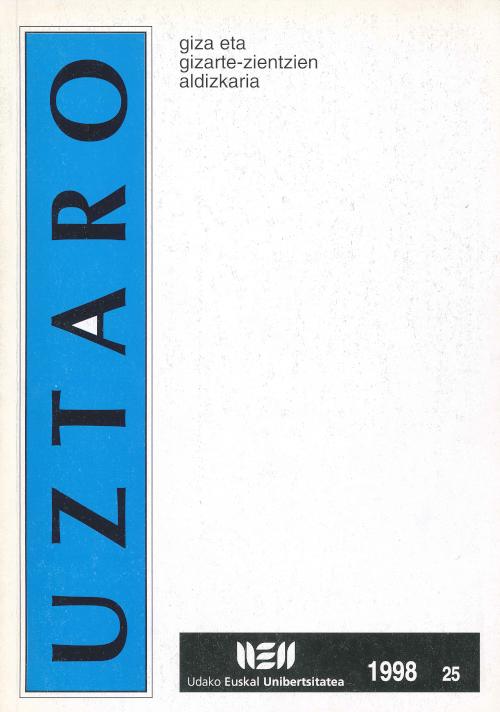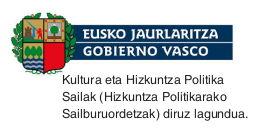Hizkuntzalaritza konparatua eta aitzineuskararen erroa
Abstract
In this article, I present a prolix series of problems and case-studies in a variety of languages that may be of interest for the analysis of the Basque root, as well as a sketch of their possible consequences for the study of the prehistory of Basque language. As the initial hypothesis for Pre-Proto-Basque, a canonical monosyllabic root is proposed of the form CVC; I then demonstrate that in disyllabic words the root would have been in the second syllable. In this framework, composition becomes the main —almost the only— productive mechanism for new word formation in Proto-Basque. Of course, we can never forget that (leftwards and truncated) reduplication could have been a possible strategy the oldest periods of Proto-Basque used to increase its word-inventory: we don’t forget the importance of alternations due to pitch, or maybe tone, differences. At the same time, I criticize some old etymologies and I defend new etymologies by internal reconstruction of second stage; I also present arguments against analyses that try to find a systematic relation between Kartvelic and Proto-Basque or a correspondence between the latter and Old European.Downloads
Download data is not yet available.
License
Copyright (c) 1998 Uztaro

This work is licensed under a Creative Commons Attribution-NonCommercial-ShareAlike 4.0 International License.
Downloads
Published
1998-02-07
How to Cite
Lakarra Andrinua, J. A. (1998). Hizkuntzalaritza konparatua eta aitzineuskararen erroa. Uztaro. Giza Eta Gizarte-Zientzien Aldizkaria, (25), 47–110. Retrieved from https://aldizkariak.ueu.eus/index.php/uztaro/article/view/3915
Issue
Section
Article
















